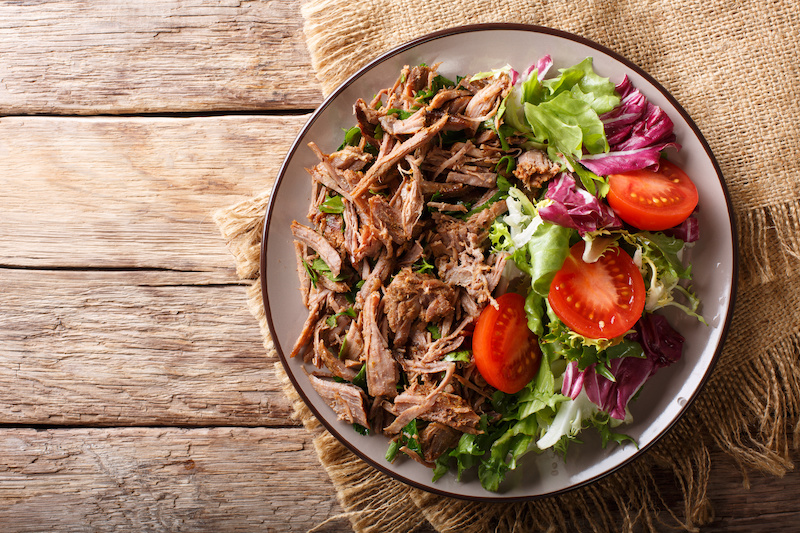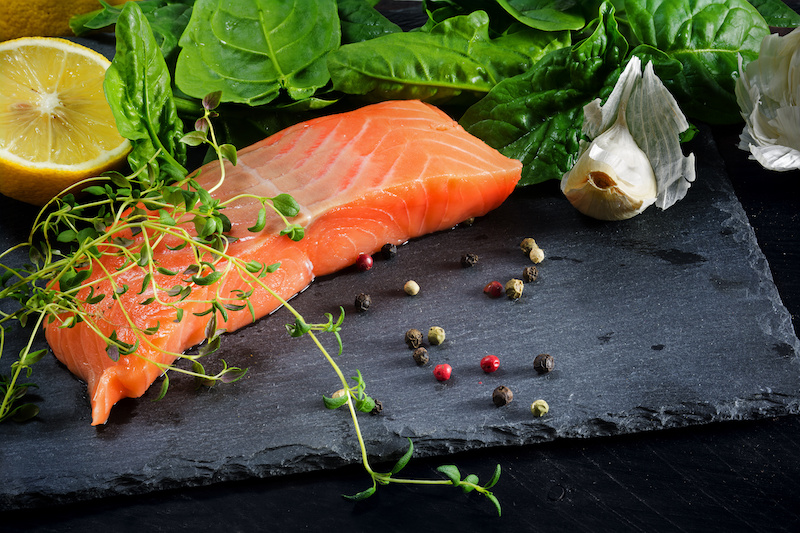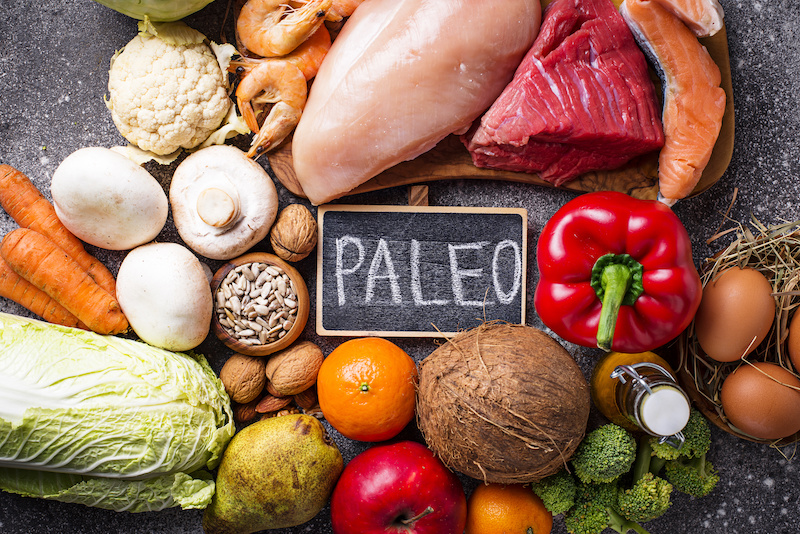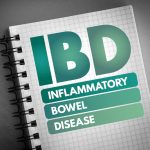With so many different diets out there, it can be difficult to figure out which diets are truly healthy and which are simply hype. Some diets, such as the paleo diet, have surged in popularity in recent years, so much so that they tend to give the impression of being “fad” diets. But is the paleo diet really a fad, or is it a healthful way of nourishing your body? And just how “paleolithic” should we be in this modern age? In this blog we look at the paleo diet, its health benefits, as well as some of the limitations of this ancient eating plan.
The Ins and Outs of the Paleo Diet
So, you’ve heard all about how popular the paleo diet is, but what exactly is it? The paleolithic (“paleo”) diet, is one based on estimations of what our ancestors ate prior to the onset of agriculture. Other names for the paleo diet include the “caveman” diet, the “stone-age” diet and the “hunter-gatherer” diet.
The paleolithic period (also known as the old stone age) was a period starting roughly 2.5 million years ago and ending around 10,000BCE with the development of agriculture. Many of the diet-related health issues encountered in modern times such as heart disease, diabetes, insulin resistance and even dementia have arisen in part due to dietary changes brought on with the rise of agriculture, which saw our diets move towards a diet much more focused on dairy and grains (of course, changes in physical activity, high chronic stress, and the development of highly processed foods also play a significant role here). Proponents of the paleo diet argue that our microbiota and physiology in general has not adapted to this changed diet and instead is better suited to the pre-agricultural dietary patterns of our ancestors. The paleo diet is an attempt to mimic the type of diet our ancestors might have eaten as hunter-gatherers, in order to try to emulate the diet that best suits our physiology.
So, what does this ancient eating pattern look like? Well, it certainly looks quite different to the standard Western diet. All dairy and grains are excluded – this includes not only wheat (e.g. bread, pasta), but also rice, oats, barley, quinoa, and even “ancient grains” like amaranth and millet. Dairy is completely excluded, including both cow and goat milks. In addition to excluding grains and dairy, the paleo diet excludes all legumes, such as lentils, chickpeas and beans. Refined carbohydrates and sugars are also off the menu, along with processed oils (e.g. vegetable oil, peanut oil), and heavily processed foods such as chips, lollies and cakes. Some foods, such as alcohol and potatoes, are up for debate and may or may not be included, depending on the individual’s ideas on the diet. Instead, the paleo diet is rich in fruits and vegetables, grass-fed lean meat, wild-caught fish, eggs, and nuts. Often times there is a focus on “the wilder the better” as far as meats and other animal foods are concerned, so game meats and even organ meats can be common choices with this diet.
Because of the focus on meats, the paleo diet is considerably higher in protein than other modern diets, with around 30% of calories coming from protein, compared to the standard Western diet’s 10-15%. This higher protein intake may be beneficial for athletes and those who are very active however, as higher amounts of physical activity does increase protein requirements. The paleo diet is also low in carbohydrate, although not as low as the keto diet. Around 25% of calories come from carbohydrates. By contrast, the standard Western diet is made up of 40-60% carbohydrates, and the keto diet is just 5-10%. The remaining 45% of calories come from fats, with 10% from saturated fats and the remaining 35% from mono and polyunsaturated fats.

Conditions it is Good For
Cardiovascular Disease
Whilst more research is needed to better evaluate the effects of the paleo diet on cardiovascular disease, the research available is positive. Studies have shown that the paleo diet can help to reduce a range of cardiovascular risk factors including blood pressure and cholesterol, as well as helping with reducing BMI and waist circumference. These beneficial effects begin very quickly, and even healthy individuals can enjoy better blood glucose levels and blood pressure by eating paleo.
Paradoxically, one study on the effects of the paleo diet on gut microbiota found long-term adherence to the diet led to increased levels of trimethylamine-N-oxide (or TMAO, for short), a by-product of certain gut microbes which is linked to cardiovascular disease. The low intake of resistant starch (one of the main food sources for our good gut bacteria) leads to changes in the amounts and types of bacteria in the gut. It’s unclear, however, whether this effect would outweigh the overall cardiovascular benefits of the diet. My love of the gut bacteria and the role they play means that other eating philosophies may be better for wholistic health..
Diabetes and Insulin Resistance
In diabetic patients, the paleo diet helps to lower glucose levels and HBA1c (a measure of glucose levels of a period of 3 months, which is used to assess longer-term trends in glucose levels). In fact, the paleo diet outperformed a diet designed specifically to help manage diabetes in terms of reducing blood sugar levels in diabetics in a 2009 study. The paleo diet also led to lower blood pressure, BMI and waist circumference, too.
Weight Loss
Much like the keto diet, the paleo diet has been found to be a beneficial dietary choice for those wishing to lose weight. A short-term study on healthy volunteers found just 3 weeks of the paleo diet led to an average weight loss of around 2.3 Kg (although some of this weight loss may be loss of body water due to a change in carbohydrate intake – see our blog on the keto diet for further info on this phenomenon). An added benefit of the paleo diet (and one which is shared with the keto diet, too) is that the higher intake of protein and fats means better satiety – feeling full after meals. Feeling full between meals can be hugely beneficial when it comes to weight loss, as it reduces the need for additional snacks.
Multiple Sclerosis
Whilst much of the research on the paleo diet has looked at its cardiovascular and metabolic benefits, there is emerging evidence to suggest it may also be beneficial in multiple sclerosis. MS is a common neurological condition that can be highly debilitating, with a host of symptoms including brain fog, physical and mental fatigue, pain, weakness, and vision problems. Studies show the use of the paleo diet helps to reduce some of the symptoms of multiple sclerosis, such as mental and physical fatigue, as well as improving exercise tolerance and hand and leg function. The result is improved quality of life for patients with MS.

Cons of the Diet
One of the most significant cons of the paleo diet is cost. The exclusion of lower cost, economical foods such as grains and legumes drives up the price. So too does the inclusion of large amounts of meat, particularly grass-fed and wild caught options, which are typically more expensive choices. These expensive food choices could make the paleo diet difficult to stick to in the long term, particularly for those in lower socioeconomic situations. Another con of the paleo diet is its environmental cost. The paleo diet has a higher intake of animal-based foods compared to some other diets, and these foods have a higher carbon footprint compared to plant-based foods. The paleolithic diet has some nutritional shortfalls, too. It is unfortunately low in calcium, so a good quality calcium supplement is typically required to prevent bone mineral loss. Similarly, a study from 2017 found long-term use of the paleo diet led to iodine deficiency, so appropriate supplementation of iodine would also need to be considered. The paleo diet would not be suitable for vegans, as the lack of legumes would significantly reduce availability of protein-rich vegan foods. Vegetarians would likely find the diet very restrictive, however would have protein-rich food in the form of eggs.
It’s also important to consider just how “paleolithic” a modern paleolithic diet can be, and whether we should even be aiming to eat like our ancestors did. Although removing grains and dairy from the diet is a step towards what our ancestors ate, in reality the meats, fruits and vegetables that are readily available to the majority of us are vastly different to their ancient counterparts. One only has to look at the difference between a cultivated banana and a wild banana to see the difference! If our foods have changed so drastically in the last 12,000 years, surely our own bodies have also changed to adapt to our new diets in this time, too. And do we do the exercise of our ancestors which may have been more appropriate with such a high protein diet? I think not.
Whilst the paleo diet certainly has its benefits, there are shortfalls in terms of nutritional profile, particularly in the long term. If you are interested in changing your dietary habits, naturopaths are trained in developing detailed eating plans that are right for you and your unique situation.
References
Cambeses-Franco, C., Gonzalez-Garcia, S., Gumersindo, F., & Moreira, M. T. (2021). Is the paleo diet safe for health and the environment? Science Of the Total Environment, 781.
Frassetto, L. A., Schloetter, M., Mietus-Synder, M., Morris Jr., R. C., & Sebastian, A. (2009). Metabolic and physiologic improvements from consuming a paleolithic, hunter-gatherer type diet. European Journal of Clinical Nutrition, 63, 947–955.
Genoni, A., Christophersen, C. T., Lo, J., Coghlan, M., Boyce, M. C., Bird, A. R., Lyons-Wall, P., & Devine, A. (2020). Long-term paleolithic diet is associated with lower resistant starch intake, different gut microbiota composition and increased serum TMAO concentrations. European Journal of Nutrition, 59, 1845–1858.
Ghaedi, E., Mohammadi, M., Mohammadi, H., Ramezani-Jolfaie, N., Malekzadeh, J., Hosseinzadeh, M., & Salehi-Abargouei, A. (2019). Effects of a paleolithic diet on cardiovascular disease risk factors: A systematic review and meta-analysis of randomized controlled trials. Advances in Nutrition, 10(4).
Irish, A. K., Erickson, C. M., Wahls, T. L., Snetselaar, L. G., & Darling, W. G. (2017). Randomized control trial evaluation of a modified paleolithic dietary intervention in the treatment of relapsing-remitting multiple sclerosis: A pilot study. Degenerative Neurology and Neuromuscular Diseases, 7.
Jonsson, T., Grandfeldt, Y., Ahren, B., Branell, U.-C., Palsson, G., Hansson, A., Soderstrom, M., & Lindeberg, S. (2009). Beneficial effects of a paleolithic diet on cardiovascular risk factors in type 2 diabetes: A randomized cross-over pilot study. Cardiovascular Diabetology, 8.
Jonsson, T., Grandfeldt, Y., Lindeberg, S., & Hallberg, A.-C. (2013). Subjective satiety and other experiences of a paleolithic diet compared to a diabetes diet in patients with type 2 diabetes. Nutrition Journal, 12.
Klonoff, D. C. (2009). The beneficial effects of a paleolithic diet on type 2 diabetes and other risk factors for cardiovascular disease. Journal of Diabetes Science and Technology, 3(6).
Manousou, S., Stal, M., Larsson, C., Mellberg, C., Lindahl, B., Eggertsen, R., Hulthen, L., Olsson, T., Ryberg, M., Sandberg, S., & Nystrom, H. F. (2018). A paleolithic-type diet results in iodine deficiency: A 2-year randomized trial in postmenopausal obese women. European Journal of Clinical Nutrition, 72, 124–129.
Osterdahl, M., Kocturk, T., Koochek, A., & Wandell, P. E. (2008). Effects of a short-term intervention with a paleolithic diet in healthy volunteers. European Journal of Clinical Nutrition, 62, 682–685.
Zopf, Y., Relijic, D., & Dieterich, W. (2018). Dietary effects on microbiota—New trends with gluten-free or paleo diet. Medical Sciences, 6(4).










